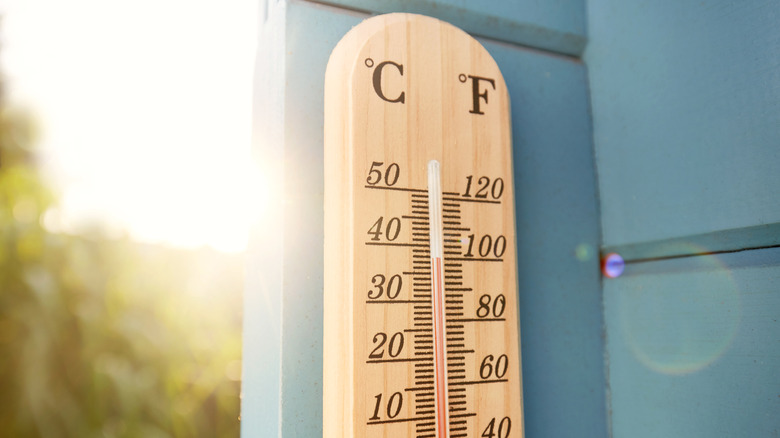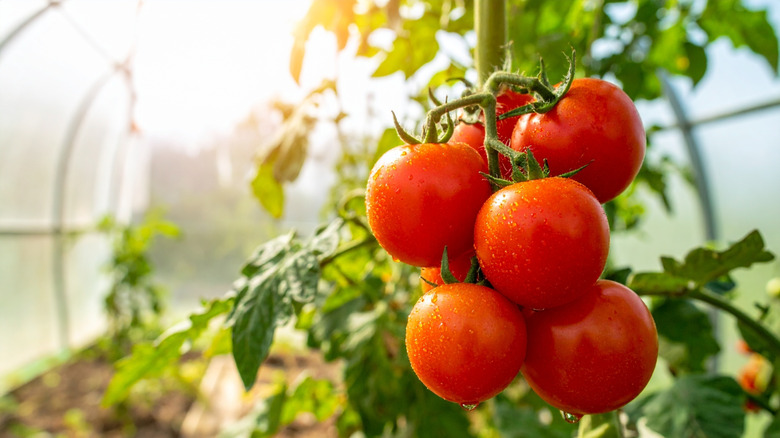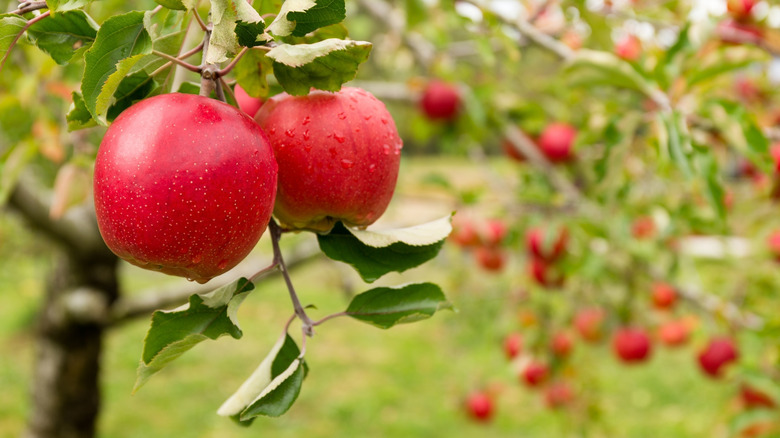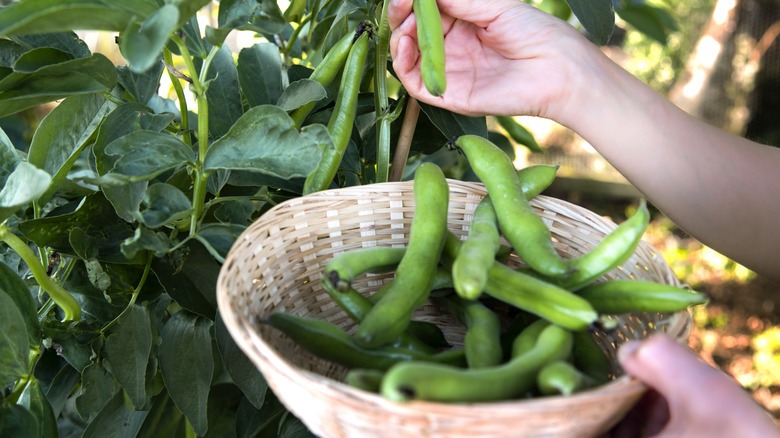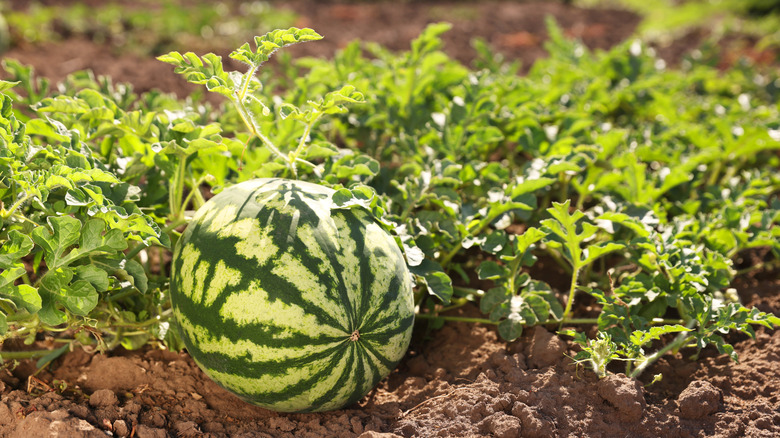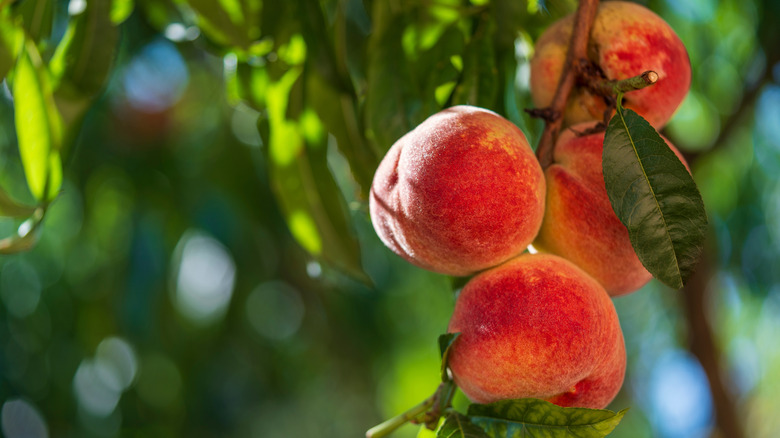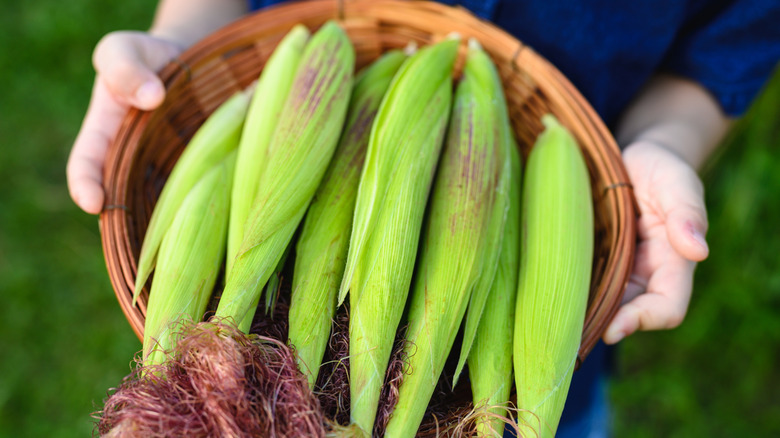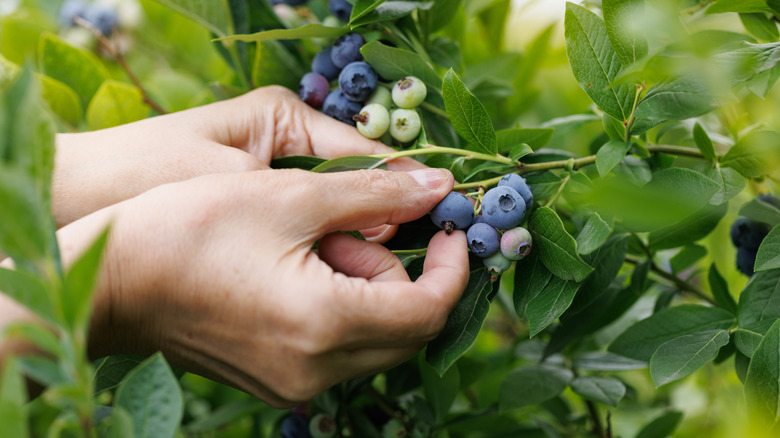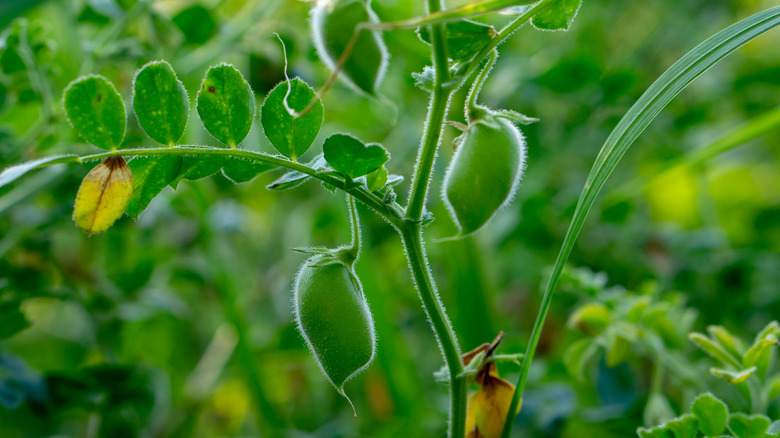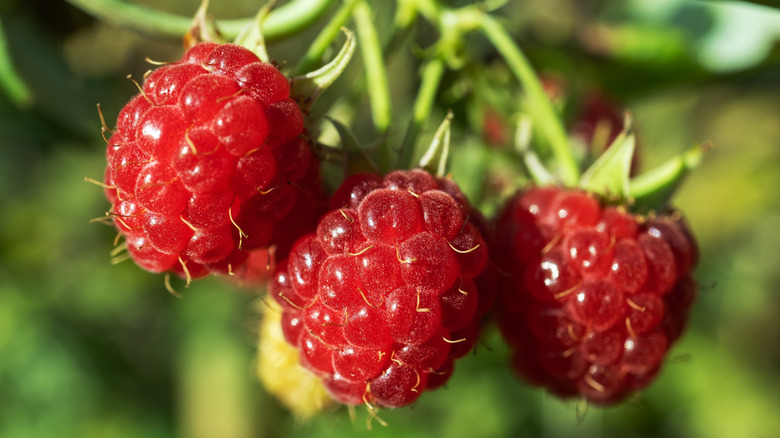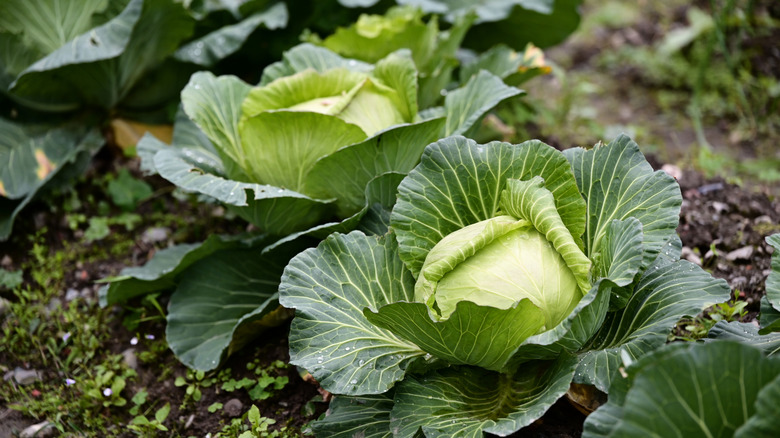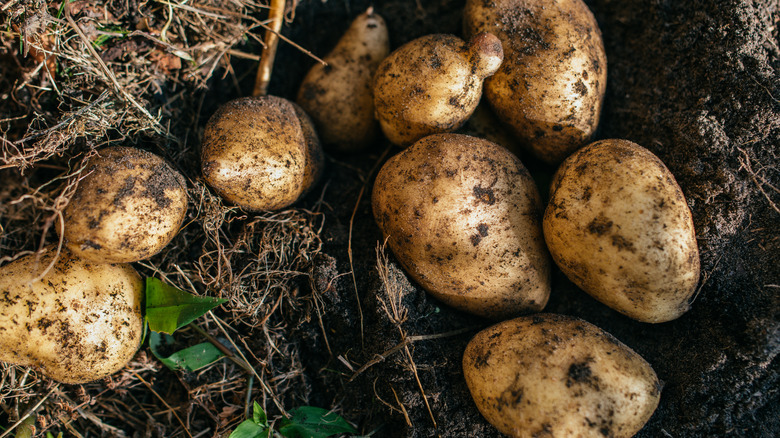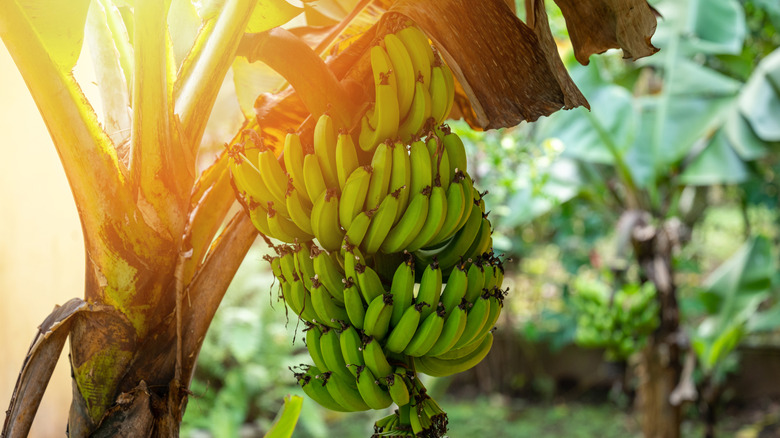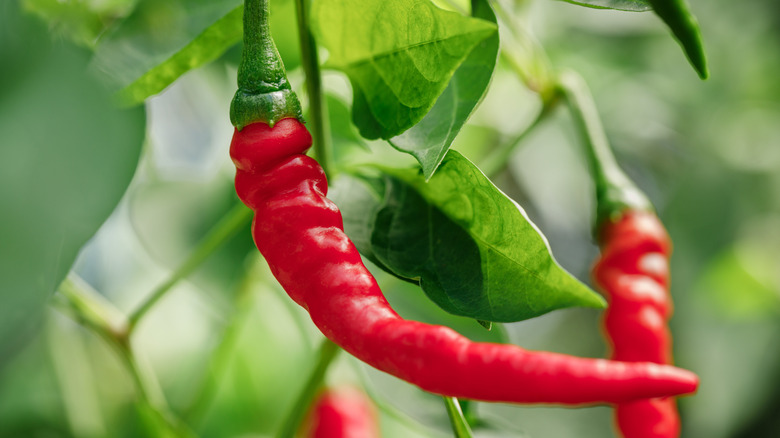The Essential Crops That Climate Change Is Making Harder To Grow
Climate change is no longer just a news story. It is already here, and it is disrupting everything. From weather patterns to crop yields and food production systems. Even home gardeners are not safe from it. For instance, your growing zone may have already changed, and your plans to create a flourishing vegetable garden are also likely to take a hit as global temperatures rise. Tomatoes, cabbage, onions, and peppers will all become harder to grow in the coming years. And, as it gets hotter, some weeds will become more prevalent, and those pesky pathogens that affect plants will also be able to persist in the soil for longer.
But it's the essential crops that are likely to feel the brunt of climate change more than anything else. Corn, wheat, and soy are all at risk. According to some estimates, by 2100, soy yields could decrease by 16%, wheat yields by 7.7%, and corn yields by 8.3%. And that's if we somehow manage to keep the change in climate under check. In extreme heating scenarios, the losses might be even worse.
Tomatoes
Tomatoes are one of the most popular crops of home gardens. They, however, could be devastated by climate change and the resulting increase in temperature and drought stress. Tomatoes are sensitive to drought almost their entire growth cycle. And even though they like warm weather, if it gets too hot, past 95 degrees Fahrenheit, they stop growing. This is really concerning as the number of super-hot days, where it will get over 95 degrees Fahrenheit is expected to rise in the coming years in the United States. Also, global tomato production is projected to decrease by 6% by 2050 due to climate change.
Apples
Fruit trees aren't safe from climate change, either. So, that whole "an apple a day keeps the doctor away" plan could soon be in trouble. Take, for example, fire blight. It is a common and extremely destructive disease of apples. It causes the most damage when the temperature is warm, about 70 degrees Fahrenheit. The high temperatures can also lead to sunburns in apples, which can cause losses of anywhere between 10% and 50%. And, climate change is making things even worse by creating favorable conditions for the development of apple tree pests such as codling moth.
Beans
There are many types of bean plants that are easy to grow. They taste delicious and are full of nutrition. It is no surprise, then, that for many gardeners, beans are a go-to crop for their vegetable gardens. However, beans are getting harder to grow, thanks to increasing temperatures and dry weather because of climate change. It is even estimated that most of today's bean-growing regions could become unsuitable for planting and growing beans by 2050. Hot temperatures due to climate change can even affect bean quality and yield by interfering with flowering and plant maturation.
Watermelons
Nothing says summer like watermelon — it is one of nature's sweetest treats. The problem, however, is that growing watermelons requires special care, and providing that care becomes even harder with problems like drought and prolonged hot periods caused by climate change. Watermelon is about 90% water, and changing climate conditions, especially water shortage during the crop establishment period, can lead to the development of plants that are too weak and have reduced yield. Likewise, common pests of watermelons, such as aphids and whiteflies, also thrive in warmer conditions, which can also cause a further decrease in yields.
Peaches
Globally, peaches are the number one stone fruit crop, and they are also cultivated in temperate areas of the United States. However, as winters become warmer and spring arrives earlier, peach crop production is at risk. Take, for example, Georgia. Nearly 40% of winters are expected to be so warm that the chilling requirements for peaches will not be met. This could very drastically cut yields. To make matters even worse, populations of codling moth, peach twig borer, and oriental fruit moth, which are common pests of peaches, are also expected to rise because of a warming climate.
Corn
Corn is the third-largest plant-based food in the world, while in the U.S., it accounts for over 95% of feed grain. However, rising global temperatures due to climate change may already be affecting corn yields. Combined with drought, higher temperatures during the pollination and grain-filling period can give a serious blow to the corn crop. To make things even worse, a great number of corn pests will likely spread into new areas in the coming years, thanks to climate change. Put together, these stresses could slash corn yields by 15 to 30% over the next five decades.
Blueberries
Blueberries are naturally slow-growing plants. They often take years to really size up, and climate change can make this even worse. Rising heat and drought not only affect the growth of blueberries but can also significantly influence the growing season, stress the plants, increase pest problems, and reduce yields. On top of that, every blueberry-growing region is expected to need more water as the climate warms. The problem is that climate change is also likely to create water shortages. And if that wasn't enough, climate change is also hurting blueberry pollinators, which might decrease the yields even further.
Chickpeas
Chickpeas are the second most important grain legume in the world, and they are grown across more than 50 countries. And with the earth heating up — and droughts becoming more common due to climate change — chickpea yield is going to take a serious hit. The issue is that hotter temperatures, especially above 95 degrees Fahrenheit, damage pollen, prevent fertilization, and limit seed development, all of which can make it difficult to grow and maintain chickpea crops. Furthermore, climate change is also giving beet armyworms an advantage over healthy chickpea crops, while at the same time reducing the effectiveness of their natural pest controls.
Raspberries
Few berries compare to raspberries. Their fragrant aroma and tart-sweet taste make them a favorite of gardeners everywhere. But climate change may soon take that joy away. The reason is that raspberries can't handle heat or drought, and these both are becoming more and more common with climate change. Furthermore, the spread of small raspberry aphids and other pests increases due to warming winters. There is also an issue with the increased prevalence of Botrytis fruit rot/gray mold, which thrives in warm, humid weather. These issues make it difficult for growers to plant and care for raspberry plants.
Cabbage
Cabbage is a cool-season crop, and it hates heat. High temperatures take a big toll on it, leading to significant declines in both yield and crop quality. For instance, drought stress can shrink the size of cabbage heads, but if the weather flips and heavy rains come instead (as climate change can trigger unpredictable weather), you will have to face another problem. Black rot, a common disease of cabbage, thrives in warm and humid conditions. Insect damage is also expected to increase with climate change in cabbage, and with everything else, it will definitely make growing cabbage difficult.
Potatoes
Growing potatoes is quite enjoyable and not difficult at all. However, they are extremely vulnerable to the rising heat due to climate change. Potatoes grow best in cool weather, and temperatures exceeding 62 degrees Fahrenheit can make them difficult to grow, which is expected to result in crop yields dropping by anywhere between 3% and 16% in the next few years. Rising temperatures may also contribute to speeding up the growth of various potato pests and pathogens. This could potentially lead to more aggressive and pesticide-resistant populations, which would make growing potatoes even trickier.
Bananas
Bananas are also under increasing threat from climate change, putting both local gardeners and global food security at risk. Bananas need temperatures between 59 and 95 degrees Fahrenheit to thrive, and they are extremely sensitive to drought as well. With climate change pushing up temperatures and creating water shortages, growing bananas is only going to get harder. And if that was not enough, it is projected that rising temperatures and shifting climate patterns are also going to increase pest pressure and fungal diseases in banana plants.
Peppers
Peppers come in all shapes, sizes, and colors, and they are fun to grow. However, pepper yields have been dropping as climate change takes its toll. While peppers thrive in warm weather, temperatures exceeding 90 degrees Fahrenheit lead to very poor fruit set. Furthermore, rising temperatures also decrease the germination rates of pollen, as well as pollinator visits. Peppers rely heavily on pollination to produce fruit, so this, along with increased pest attacks due to climate change, can make it significantly harder to grow peppers.
